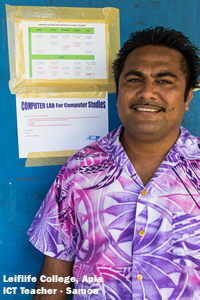1. Curriculum Mapping:
The proposed course or programme is thoroughly mapped ahead of any development phases. The map contains high-level objectives as well as specific unit outcomes, proposed content, teaching methodology and the number of credits and/or sub-credits. This detail is necessary because the map will shape the development phases and will be used to assess to what extent various draft versions satisfy the course’s overall purpose and function.
2. OER Identification:
An Internet search for OER that support the teaching of the various course units is required. These resources are available free of charge and do not require permission to use, distribute and, in many instances, repurpose. They are copyrighted with an open license — typically a Creative Commons license. Several existing OER websites make this search process easier than it sounds.
3. Assess Appropriateness of OER
Beyond pinpointing OER that are closely aligned to the course direction identified by the curriculum map, a developer also must determine the quality and suitability of each OER found, as well as the amount of repurposing required. Ideally, resources should need little or no repurposing. Developers have to assess how the OER would be used to achieve the outcomes plotted in the curriculum map. This requires a certain level of creativity and subject familiarisation.
4. Course Guide Writing:
A course guide is written that identifies a proposed learning pathway through the OER materials via a set of suggested teaching/facilitation plans. In addition to identifying the sequence of learning events, the guide should also offer a suggested set of student activities so that the learning process is not merely didactic but calls on students to engage critically with the sourced OER. Assessment opportunities should also be a  component of the guides.
component of the guides.
5. Platform Development:
As the course, materials and guides are digital, a platform should be devised to allow distribution to staff and students. A low-tech solution would be to develop an HTML interface for the materials. (7) This would allow the sharing of course resources via flash disk or CD-ROM should connectivity be an issue. The course materials could be read using mobiles, laptops, eReaders or desktop computers. The digital basis of the course allows for quick revision and updates. In more resourced environments where access to digital media is more prevalent, multimedia can be exploited more readily. Also, communication tools can be harnessed to make the course less “teacher-centred” by encouraging peer-to-peer engagement.
- To see the interface designed to distribute the course guides, materials and assessment that were handled in the Caribbean project, visit: http://ccti.colfinder.org/sites/default/files/guyana/index.html